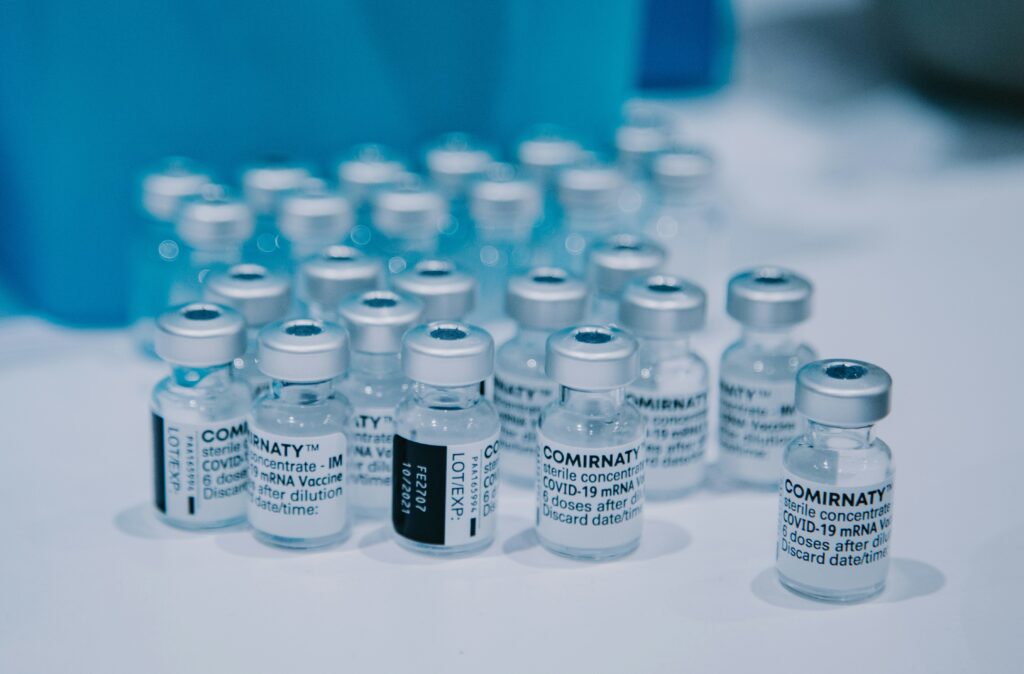Pfizer Inc. (NYSE:PFE) is one of the world’s most established and influential pharmaceutical companies, with a history spanning more than 170 years of scientific innovation and groundbreaking healthcare solutions. Founded in 1849 by Charles Pfizer and Charles Erhart in Brooklyn, New York, the company began as a small manufacturer of fine chemicals before quickly expanding into pharmaceutical production. Its first major success came with the mass production of citric acid and later penicillin during World War II, a milestone that positioned Pfizer as a global leader in antibiotics and set the stage for its long-standing role in public health. Over the decades, Pfizer has consistently been at the forefront of developing and delivering medicines and vaccines that address some of the world’s most pressing health challenges, ranging from infectious diseases and cardiovascular disorders to oncology, immunology, and rare conditions.
Headquartered in New York City, Pfizer has grown into a multinational powerhouse with operations in more than 125 countries and a workforce exceeding 80,000 employees worldwide. The company’s scale and reach make it one of the largest pharmaceutical firms globally, with a portfolio that includes some of the most widely prescribed and recognized medicines. Products such as Lipitor, Viagra, Prevnar, and Eliquis have become household names, generating billions in revenue while helping millions of patients worldwide. Pfizer also commands one of the most diverse pipelines in the industry, with active programs in oncology, vaccines, rare diseases, and gene therapy, reflecting its strategy of investing heavily in research and development to fuel long-term growth.
In recent years, Pfizer has become a global symbol of pharmaceutical innovation through its development of the COVID-19 vaccine, Comirnaty, in partnership with BioNTech. The vaccine was the first of its kind to be authorized for emergency use in late 2020 and later fully approved, becoming a cornerstone in the global fight against the pandemic. This achievement highlighted Pfizer’s ability to rapidly mobilize its scientific expertise, regulatory experience, and global distribution network to address a once-in-a-century public health crisis. Beyond COVID-19, the company has continued to diversify its revenue base, investing in cutting-edge fields such as mRNA technology, immuno-oncology, and next-generation antiviral therapies, ensuring its leadership in the future of medicine.
Pfizer’s long-term strategy is built on three key pillars: advancing a high-value pipeline of breakthrough therapies, expanding access to healthcare across global markets, and creating sustainable value for shareholders. Its $70 billion commitment to research and development and domestic manufacturing underscores its determination to strengthen its U.S. footprint while ensuring resilience in its global supply chain. At the same time, Pfizer has embraced new distribution models, such as direct-to-consumer initiatives, while forging partnerships with governments and health systems to ensure equitable access to its medicines. This combination of scientific excellence, commercial scale, and social responsibility positions Pfizer as a unique leader in healthcare, one that continues to shape the trajectory of global medicine while driving growth for the long term.
Tariff Relief as a Game-Changer for Stability
A major concern for Pfizer in 2025 was the threat of steep tariffs on pharmaceuticals, with President Trump vowing to impose 100% duties on branded drugs unless companies increased domestic production. However, Pfizer CEO Albert Bourla secured a three-year grace period that shields the company from the most damaging aspects of U.S. trade policy. The negotiated deal requires Pfizer to lower certain drug prices through a new platform, TrumpRx, offering average discounts of 50% directly to American consumers.
This resolution removes a huge overhang for the company, giving Pfizer operational stability in the U.S. market while staving off the Section 232 investigation into pharmaceutical imports. It also demonstrates Pfizer’s political acumen in negotiating favorable terms while avoiding punitive measures that could have eroded profitability. The immediate stock reaction—shares rising as much as 5.6% following the announcement—underscores the market’s recognition that tariff relief eliminates a near-term existential risk.

CHECK THIS OUT: Tiziana (TLSA) Surges 143% in 2025 and Immuneering (IMRX) Reports 86% 9-Month Survival in Pancreatic Cancer.
Strategic Pricing Shift Unlocks Market Opportunities
By launching discounted direct-to-consumer sales through TrumpRx, Pfizer gains a new channel to reach patients without relying entirely on traditional intermediaries. More importantly, this move aligns the company with government objectives on healthcare affordability, positioning Pfizer as a cooperative partner rather than an adversary.
Pfizer’s commitment to granting Medicaid recipients “most favored nation” pricing enhances its ability to preserve public goodwill while complying with regulatory demands. While some view these concessions as margin-compressive, they may ultimately expand market share, especially in high-volume categories like Eliquis (blood thinner), Prevnar (pneumonia vaccine), and COVID treatments. Lower out-of-pocket costs increase patient access, which could drive higher prescription volumes and counterbalance pricing pressure.
A $70 Billion Bet on R&D and Domestic Manufacturing
Perhaps the most bullish development is Pfizer’s bold commitment to invest $70 billion in research, development, and U.S. manufacturing over the coming years. This signals a long-term vision not just to defend market share but to seize leadership in next-generation therapies.
Few pharmaceutical companies possess the scale and balance sheet strength to deploy such massive capital toward innovation and capacity expansion. By increasing its U.S. footprint, Pfizer not only appeases political leaders but also reduces supply chain vulnerabilities, enhances quality control, and positions itself as the clear domestic champion in an industry under scrutiny. Such investment is likely to accelerate pipeline productivity, giving Pfizer the firepower to replace revenues from drugs facing patent expiration with new blockbusters.
Shareholder Impact: Stability, Growth, and Confidence
The combination of tariff relief, price concessions, and massive reinvestment lays the groundwork for sustainable growth. Investors should take note that Pfizer’s stock had declined 10% year-to-date prior to the announcement, trailing the S&P 500’s 13% gain. This underperformance reflects fear about tariffs, pricing reform, and slowing COVID-related revenues. With those concerns now significantly mitigated, Pfizer has the chance to re-rate higher as stability and visibility return to its business model.
The fact that shares surged 5.6% on the news suggests that the market recognizes the upside. As additional deals are struck between the government and other pharmaceutical companies, Pfizer’s first-mover advantage may prove particularly beneficial, as it gains certainty before many rivals do.
Political Positioning: A Competitive Advantage
The Trump administration has shown a clear willingness to pressure industries into concessions through tariffs and trade threats. However, Pfizer has emerged as one of the few pharmaceutical companies able to secure favorable terms while maintaining its long-term strategic roadmap. This transactional political landscape rewards those who can negotiate directly and deliver visible wins for the administration. Pfizer’s cooperation on drug pricing reform ensures its exemption from harsher penalties and allows it to focus on growth rather than defense.
As the White House signals that other pharmaceutical giants may be forced into similar agreements, Pfizer’s early compliance provides a competitive advantage. It has already locked in tariff exemptions, secured goodwill, and positioned itself as a partner rather than a target, reducing political risk that has plagued the entire industry.
Long-Term Bullish Catalysts Beyond Policy Relief
Even beyond the tariff deal, Pfizer remains a fundamentally strong company with multiple growth drivers. Its late-stage pipeline contains therapies for oncology, immunology, metabolic disease, and vaccines that can reshape revenue composition. The expansion into direct-to-consumer sales opens new strategic possibilities, while the $70 billion R&D plan accelerates innovation at scale.
Moreover, the company’s emphasis on U.S. manufacturing investments could reduce future regulatory hurdles, while also making Pfizer a central player in U.S. biopharma self-sufficiency—an increasingly critical policy goal. These factors position Pfizer not only for short-term relief but also for durable, long-term competitiveness.
Conclusion: A Renewed Investment Case for Pfizer
Pfizer has navigated one of its most challenging policy environments with skill, emerging stronger and more stable than many expected. By securing a three-year tariff exemption, aligning with government demands on drug pricing, and committing to a $70 billion R&D and domestic manufacturing expansion, the company has restored investor confidence and unlocked significant future opportunities.
While risks remain—including ongoing patent cliffs, global pricing debates, and regulatory pressures—the near-term outlook has improved dramatically. With its diversified portfolio, robust cash flows, and strategic alignment with U.S. policy, Pfizer is once again positioned as a long-term winner in the pharmaceutical sector. For investors looking for stability with upside potential, Pfizer’s ability to turn political headwinds into growth catalysts makes a compelling bullish case.
READ ALSO: CEL-SCI (CVM) Stock Could Explode After Saudi Breakthrough Deal and Ondas Holdings (ONDS) Lands $2.7M Defense Order.








